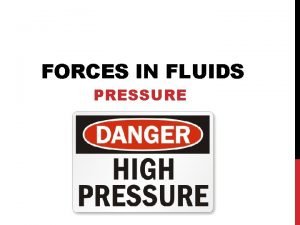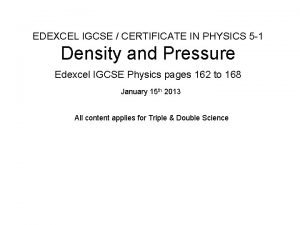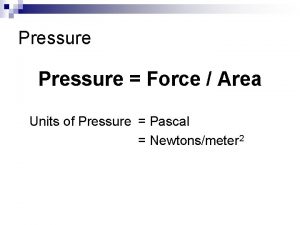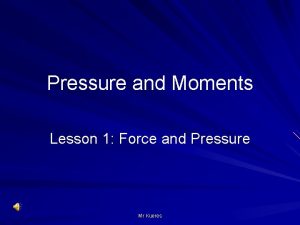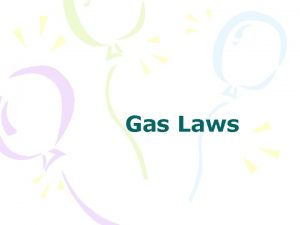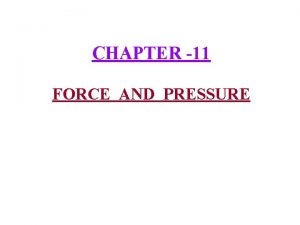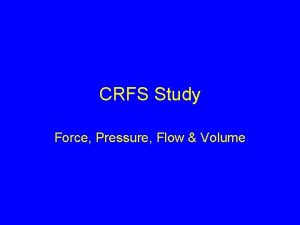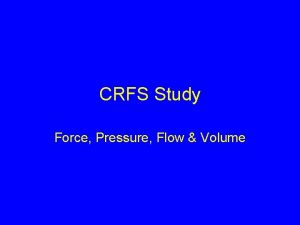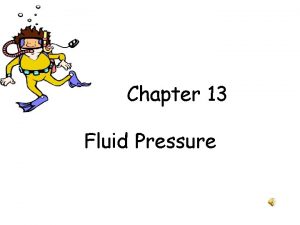10 2 NOTES Pressure Pressure force over area










- Slides: 10

10. 2 NOTES Pressure

• Pressure- force over area that force is applied on • • Less area with same force = greater pressure • • Measured in pascals (Pa), which is the SI unit for pressure • • These are very small, so kilopascals, or k. Pa, are used, which are 1000 times greater in size than Pa

• International System of Units • International standard for the metric system • Base units • Express fundamental physical quantities of the modernized metric system • Length, mass, time, temperature, quantitiy (mole), electric current, luminous intensity • Derived units • Made of 2+ base units • Area, volume, pressure


• Atmospheric Pressure • Pressure the atmosphere exerts on the Earth’s surface • • Standard atmospheric pressure is equal to 1 atmosphere, which is abbreviated atm. • 1 atm = 101. 3 k. Pa = 760 mm. Hg •

• Barometer- device for measuring atmospheric pressure •

• Dalton’s Law of partial pressure – total pressure of a mixture of gasses is equal to the sum of the individual pressures of all gasses present • Ptotal = P 1 + P 2 + P 3 + ……

• Example: Oxygen gases is collected over water. If the total pressure of the system is equal to 49. 2 k. Pa, and the pressure of the water vapor is 23. 4 k. Pa, what is the pressure of the oxygen gas? • Ptot = PO 2 + PH 2 O • 49. 2 k. Pa = PO 2 + 23. 4 k. Pa • PO 2 = 25. 8 k. Pa

• Atoms and Molecules in Motion • Review solids, liquids, and gases are held together by intermolecular forces • • These forces are strongest in solids and weakest in gases

• Kinetic molecular theory • • Explains gas behavior • • Gases consist of tiny particles in constant random motion • • Molecules bang against each other and the walls of the container in elastic collisions (energy is conserved) • • As temperature increases, KE and velocity increase (KE = 1/2 mv 2) • • At the same temp, all gases have the same KE.
 Force pressure x area
Force pressure x area Gcse pressure questions
Gcse pressure questions Pressure force area questions
Pressure force area questions Fluids
Fluids Density and pressure igcse physics
Density and pressure igcse physics Pressure = force/area units
Pressure = force/area units Pressure and moments
Pressure and moments Pressure is force per unit area
Pressure is force per unit area Over the mountains over the plains
Over the mountains over the plains Siach reciting the word over and over
Siach reciting the word over and over Explain how to handing over and taking over the watch
Explain how to handing over and taking over the watch



